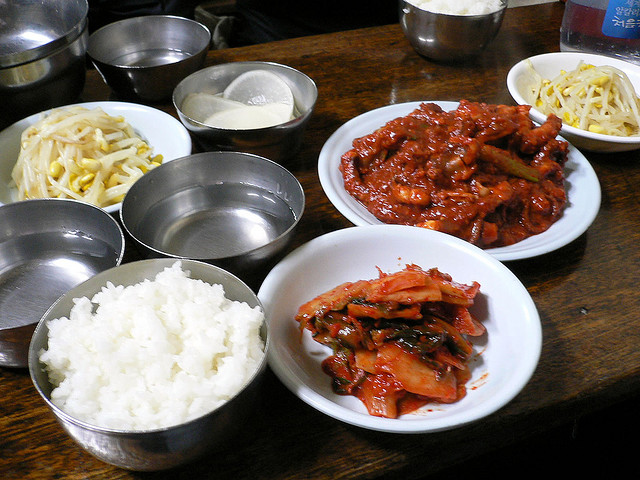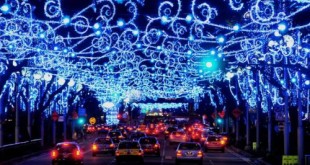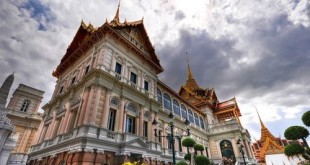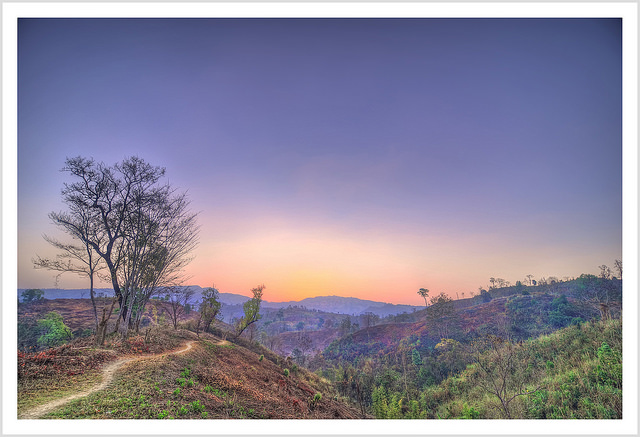South Korea is a land with a rich cultural heritage, with long traditions that have withstood the test of time. Many of their holidays center on these, and people take pride in participating in them, passing it on to the future generations of their beautiful country.
South Korea generally follows the Gregorian calendar, thus begin the new year on January 1. However, there are still plenty of holidays that are based on the traditional lunar calendar. On these holidays, offices and banks, as well as schools, are closed. Places of leisure, museums, palaces, department stores, parks, and commercial establishments are open for business. These are often where people flock to during the holidays.

Here is the list of official Korean holidays for 2016. It’s a great guide for visitors when planning their trips, in order to make the most of the available attractions and services.
New Year’s Day
January 1
The dawn of the new solar year is much anticipated in Korea as it is anywhere else in the world. Families and friends gather to celebrate, counting down on New Year’s Eve to the dawn of the New Year. Many people go to the sea, or to the mountains, to catch a glimpse of the first sunrise of the year.
Seollal
February 7 to 9, with 10 as a substitute holiday
Seollal is the first day of the first lunar month. For the Koreans, Seollal holds more significance than the new year of the Gregorian calendar. It is similar to the Chinese New Year holiday, and is a time for prayer and paying respect to one’s ancestor. Koreans also travel back to their hometowns to visit relatives. Preparations are done on the days leading up to Seollal, and many take the day off to travel. On the day itself, people get together to play traditional games, partake in feasts with traditional foods, or just simply enjoy one another’s company. The hanbok is traditionally worn, but many choose to don formal wear instead. The day begins with an ancestral rite of praying before a ritual table for respect and thanks, as well as praying for the family’s well being for the upcoming year.
Independence Movement Day
March 1
Korea was once an annex of Japan. Independence Movement Day, or the March 1st Movement, commemorates the day in 1919 when Koreans first publicly displayed their resistance to the Japanese who occupied Korea. Today, Koreans commemorate this day by reading the independence declaration at the Tapgol Park in Seoul.
Children’s Day
May 5
Korea honors its children, and on Children’s Day, they are the focus of the celebrations. Their individualities and personalities are celebrated. Children are treated by their parents and grandparents to trip to the zoo, parks, or anything that they enjoy.
Buddha’s Birthday
May 14
On the 8th day of the fourth lunar month, Korean Buddhists celebrate Buddha’s birthday. Preparations begin in advance, and on the Sunday before the actual day, people would participate in evening parades by carrying lanterns to temple courtyards. Lotus lanterns decorate the temples, and many of them provide free meals and tea to the visitors. Traditional games are also played. In Seoul, a large lantern festival is also organized. In other countries, this day is also known as Vesak.
Memorial Day
June 6
Each year, the Republic of Korea celebrates Memorial Day on June 6 to honor the many men and women who died while serving the military. These may be during the Korean War, or in other wars and significant to the country’s history. A memorial ceremony is annually held at the Seoul National Cemetery. Sirens are simultaneously sounded across the country at 10 AM, and a moment of silence is held for a minute. Flags around the country are flown at half-mast.
National Liberation Day
August 15
In Korean, today is literally the “Restoration of Light Day”. This commemorates the day when Japan officially surrendered to the Allied, thus giving Korea its independence in 1945. This paved the way for the establishment of the independent Korean government, three years later, on the same date. An official ceremony, led by the South Korean president, is held at the Independence Hall of Korea in Cheonan. Alternatively, it is also held at the Sejong Center for the Performing Arts. The national flag is displayed in public places and homes.
Chuseok
September 14-16
This is the Korean Thanksgiving Day and is one of the most important holidays of the country. Families get together for feasts and reunions. It is also a day to say prayers of thanks, and to pay respects to their ancestors. The holiday originated as a time for the Koreans to celebrate and share their abundant harvest. Today, Koreans celebrate Chuseok by preparing feasts, conducing memorial services for their ancestors and visitng graves. In some ceremonies, the Ganggangsulle, or Korean circle dance, is performed on the night of the full harvest moon. Songpyeon, a traditional rice cake, is also served.
Foundation Day of Korea
October 3
This day is known as Gaecheonjeol, and it celebrates the creation of ancient Korea, or Gojoseon, by Dangun Wanggeom in 2333 B.C. It is a holiday that South Korea shares with North Korea, although it is not a public holiday with the latter. A simple, tradtional ceremony is held at the top of Manisan Mountain in Ganghwado. According to legend, the altar thre was build by Dangun himself as a sign of gratitude to his ancestors. ‘Gaecheon’ means “Opening of Heaven”, and refers to the date when Hwanung, the Supreme Divine Regent, descended to eath to live among the mortals. Dangun is his son.
Hangeul Day
October 9
It is interesting to note that the Koreans not only honor its people and event surrounding them, but they also honor their writing system, Hangeul. It was invented by King Sejong, and was the product of a long process. He wanted to make it easier for his people to write and communicate, and finally on this date in 1443, Hangeul was ready. Each stroke of the character has a logical description, making it easier for the people to learn and remember. It was initially met with opposition from the noble class, thus requiring King Sejong to work on it as discreetly as possible. “Hangeul”is made of two words that means “great alphabet”.
Christmas Day
December 25
This Christian holiday has been widely observed and celebrated in Korea, as it has been with the rest of the world. Christians attend church services on this day, and get together with family and friends for delicious feasts and parties. Many commercial centers take advantage of the holiday by hosting Christmas events and discount sales, while going all out in decorations.
Photo by Satomi Abe




